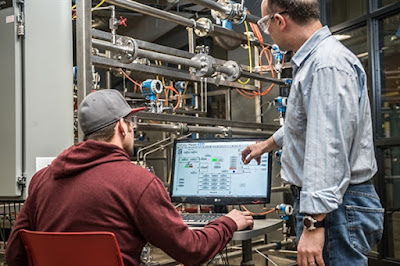INSTRUMENT DATA SHEET
An Instrument Data Sheet is a document containing specification and information about an instrument. Specifies general instrument information such as tag number identification, service description, location (line number/equipment number), P&ID number or drawing number reference, process data (if applicable), calibrated range (if applicable), material , performance details (such as accuracy, linearity - if applicable), hazard certification (for electrical equipment), required accessories, etc. The details of information in the data sheet may vary from device to device, such as transmitter, switch, meter , control valves.
Reference Document: Piping and Instrumentation Diagram (P&ID), Heat and Material Balance (HMB), Line List, Instrument Specifications, Piping Specifications, Calculation, Supplier Catalog.
The preparation of the data sheet requires certain references to documents/drawings. The following steps describe the workflow:
The P&ID provides general information such as device tag number, service description, line number/device number, P&ID number.
Process data. Any of the following process data should be available for tool selection; liquid type, liquid state (gas/liquid), design pressure, operating pressure, design temperature, operating temperature, flow rate, density, viscosity, specific gravity, specific heat ratio (gas), molecular weight (gas). However, the process data information that needs to be included in the data sheet varies by instrument type. For example, a pressure gauge data sheet does not require a specific heat ratio. Based on the knowledge of this process data, the instrument engineer can select the instrument material, calibrated range, physical characteristics, etc. The process data can be obtained from the process discipline document called "Thermal and Material Balance". Alternatively, the instrumentation engineer can look at the line list, also issued by the process discipline, to obtain general process data. However, compared to HMB, only limited process data is provided in the linelist document.
Project specifications. The company has a specification that details the minimum instrumentation requirements. In addition, it also provides a standard that should be applied to the instruments to ensure a uniform specification for a particular instrument throughout the plant. This is intended to minimize spare parts and tools as well as ease maintenance.
Calculation. Some tools need to be calculated to be the correct size. This calculation is required before preparing the data sheet. Control valve, safety pressure valve, diaphragm, sump are some of the devices that need to be calculated.
Dealer catalog. When preparing a data sheet, it is recommended to refer to the supplier's catalog to ensure the availability of the equipment in the market. Failure to do so could result in difficulty finding the tool in the market at the procurement stage. If the device is not available in the market, it can change the design, not only the device design, but also go back to the process design. Not only rework, but it can also lead to project delays.
Code and standard. Last but not least, cross-checking of the related code and standard is necessary, although this issue was mostly covered in the project specification.
Purpose of the device data sheet
The purpose of instrument datasheet
Once completed, the data sheet is attached to an application to be sent to multiple vendors. Dealers will offer their offer with different models and manufacturers between offers. It is the Instrumentation Engineer's responsibility to evaluate all bids and determine which bid is technically acceptable.
After considering the technical and business aspects, the tool is purchased. After the purchase order, the supplier submits a supporting document and drawing. Based on supplier information, the instrument data sheet may be updated to include details to make the data sheet "as built".
Finally, the data sheet, along with its supporting contractor data, is stored in a library or document control and will be referenced during construction, operation, and maintenance
.png)














.jpg)




.jpeg)
.jpeg)
.jpeg)
.jpeg)
.jpeg)




